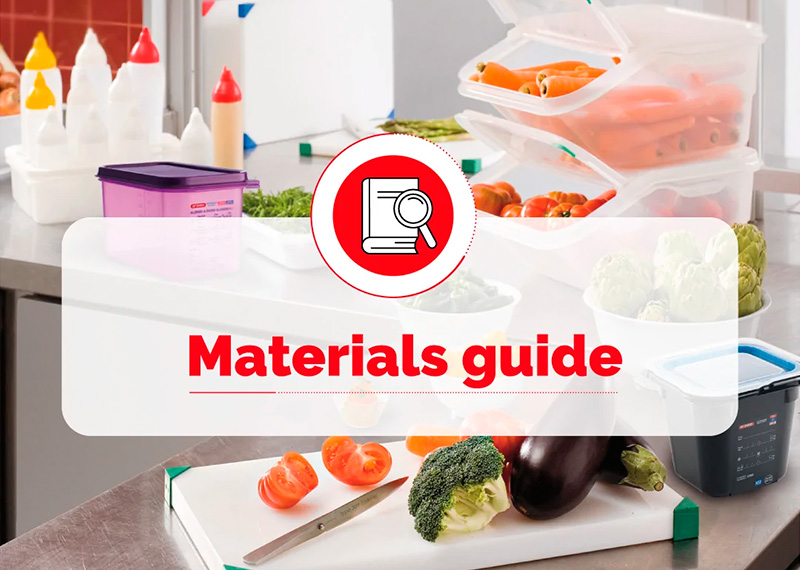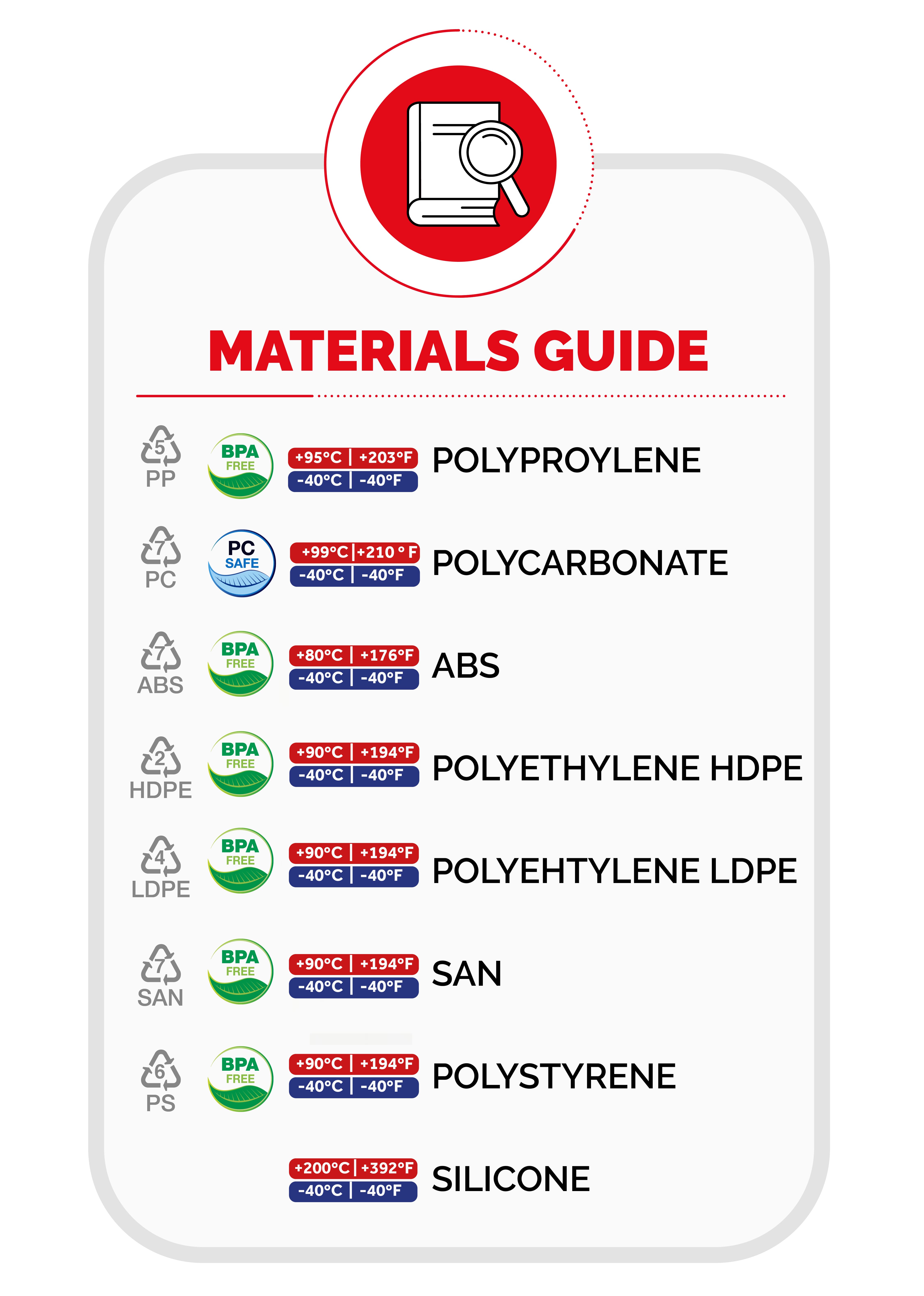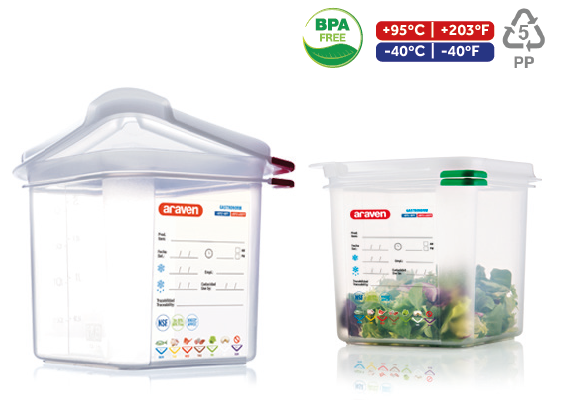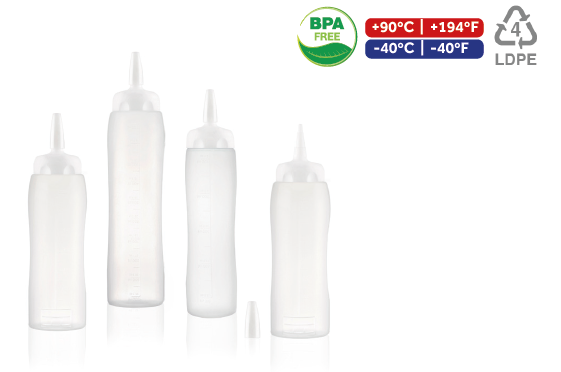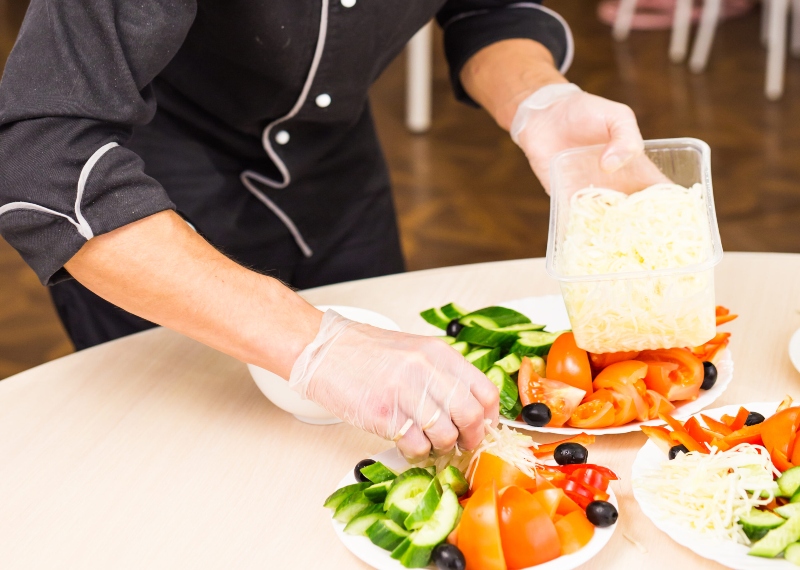Food safety does not only depend on the state of the food and the type of process that it is subjected to. The materials that food comes into contact with are also very important. In this post we are going to review the functional characteristics of each type of material that we use in ARAVEN products. In this way we will choose those that best adapt to the needs of each process in the professional kitchen.
Araven’s products, designed on the basis of the CODEX Alimentarius
Our products, designed on the basis of the CODEX Alimentarius, help hospitality establishments to apply Correct Hygiene Practices to prevent, reduce or eliminate possible hazards during the different stages of food preparation, handling and preservation. These work tools have been designed to minimise the risk of food contamination. They are made of corrosion-resistant materials that are easy to clean and disinfect.
Heath Authorities check that the products used in catering establishments comply with regulations.
Migration
Regulations on migration establish limits on the migration of substances in plastic materials and apply to plastics that are intended to come into contact with food. ARAVEN complies with ALL Migration Regulations: Directive 2005/79/EU, Directive 2007/19/EU, Directive 2008/39/EU and Directive 2011/10/UE.
Polypropylene – PP
Transparency allows you to identify food. A perfect balance of strength and weight, along with the sturdiness and thermal characteristics of this plastic, make it the most commonly used solution for preserving food among hospitality professionals.
High resistance to heat: 95ºC. Good behaviour at low temperatures -40ºC. Good balance between rigidity and toughness. Strength, hygiene, durability …
Dishwasher safe. Resistant to chemicals and surface corrosion.
BPA Free products.
Polycarbonate – PC
High impact resistance. Very robust and durable. Optimal behaviour at very low temperatures and withstands high temperatures, including bain marie processes.
Maximum transparency allowing food and its state to be quickly seen.
Dishwasher-proof.
High dimensional stability.
Very low absorption of humidity.
Stability with regard to chemical agents, does not stain.
Acrylonitrile butadiene styrene – ABS
High impact resistance. Very robust and durable. Optimal behaviour at very low temperatures and mid-range temperatures. Maximum transparency allowing food and its state to be quickly seen.
Dishwasher-proof.
High dimensional stability.
Very low absorption of humidity.
Stability with regard to chemical agents, does not stain.
BPA Free products.
Polyethylene – HDPE
White without colouring agents.
Good resistance to impact, high resistance to corrosion. Good performance at freezing temperatures and prevents passage of moisture. Good dimensional stability without being a rigid material.
Dishwasher-proof.
BPA Free products
Polyethylene – LDPE
Translucent without colouring agents.
Very flexible. It is soft and elastic; it has a very high elastic limit and recovers its shape after deformation. Good mechanical and optical properties.
Dishwasher-proof.
BPA Free products.
Silicone
It is a synthetic polymer used in different utensils, containers
and moulds for the kitchen.
Does not leave residues.
No wear. No ageing.
Non corrosive. It does not oxidise like metal.
It does not deform; it recovers its usual state.
It does not break like glass.
It does not alter the taste of food. Does not leave a taste.
It does not act as a medium for bacterial growth. Safe
Water repellent.
Do not use with sharp utensils.
Resistant to extreme temperatures.
Dishwasher-proof.
BPA Free products.
Acrylonitrile Estyrene – SAN
A highly transparent material when not coloured, offering great visibility and gloss. Its appearance is enhanced when mixed with a colouring agent.
It is rigid but much more brittle than the other materials.
Dishwasher-proof.
BPA Free products.
Polystyrene PS

Material with an excellent appearance, gloss and surface finish.
Dishwasher-proof.
BPA Free products.
Which are the most used material in… ?
Find a Wide Variety of Products at Araven!
Now that you know the different materials and all their advantages, it’s time to purchase products that meet these needs . At Araven, we have a wide collection of professional products, perfect for the food service industry. Discover them on our website!
